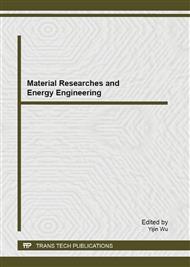p.731
p.735
p.739
p.744
p.751
p.755
p.761
p.765
p.771
Utilizing of In Situ Combustion Process in Xinjiang Oil Field through Analysis of Produced Fluids
Abstract:
The tests of domestic In-Situ Combustion began in 1960s, with smaller and slower development. The technology has been further developed in recent years. There are five pilot projects, which increase more than 60,000 tons of crude oil. X block of Xinjiang Oil Field has been ignited since December of 2009. With the development of the In-situ Combustion technology, the use of analysis of produced fluids is very necessary, which provide theoretical basis for the commencement of the next steps. We can draw conclusion through the analysis of produced fluids: the success of ignition; the adequacy of combustion; reactions at high temperature or low temperature; the forward direction and location of fire front. Analysis of produced fluids for Xinjiang Oil Field determine clearly the ignition is successful and the way forward of the fire-drive front.
Info:
Periodical:
Pages:
751-754
Citation:
Online since:
September 2013
Authors:
Price:
Сopyright:
© 2013 Trans Tech Publications Ltd. All Rights Reserved
Share:
Citation:


